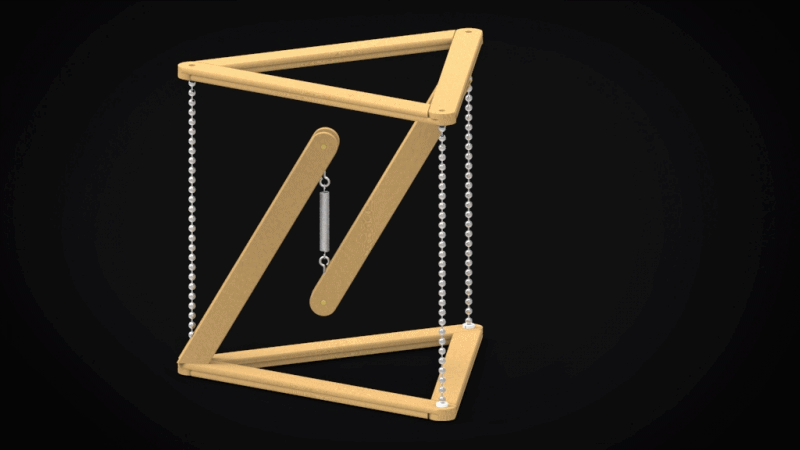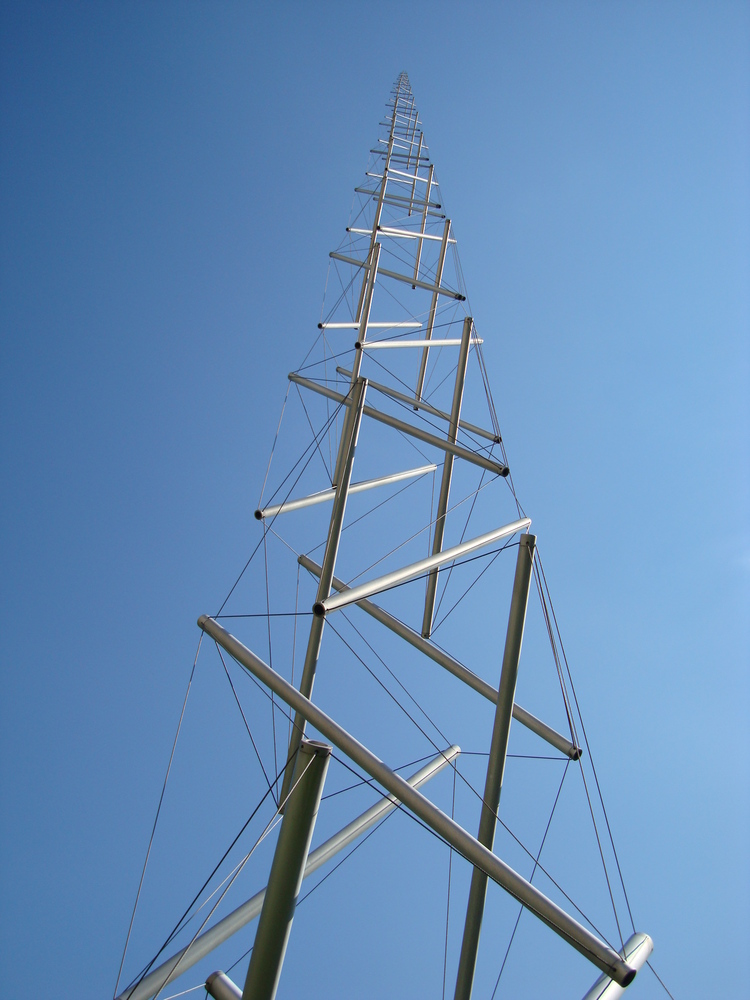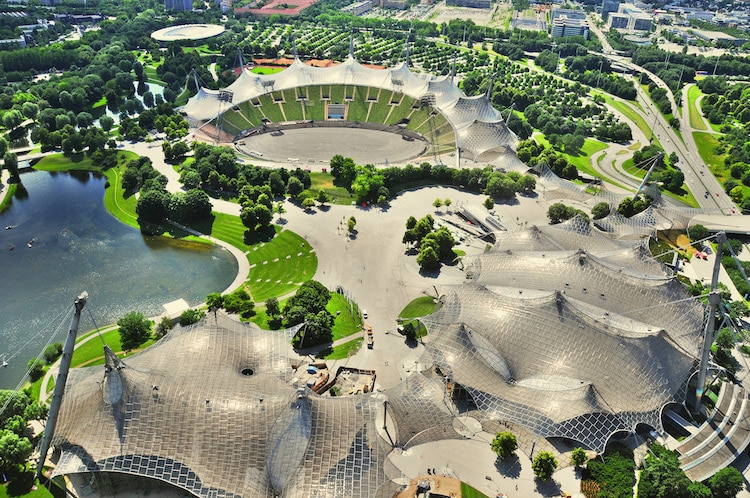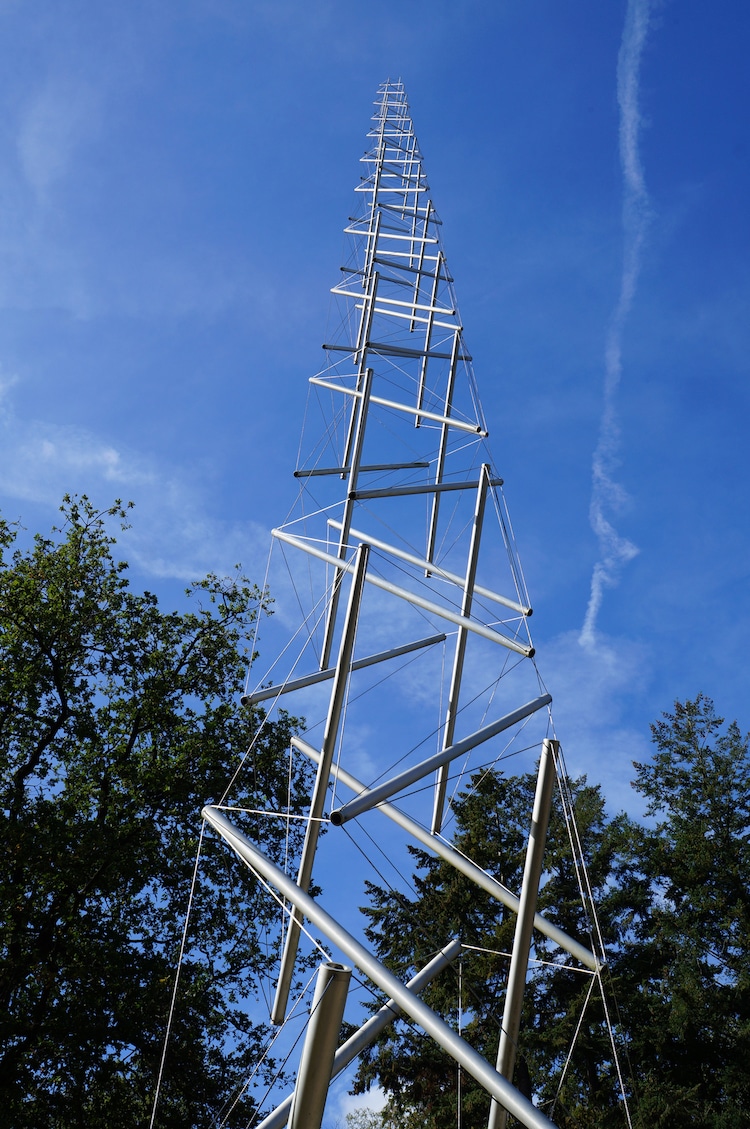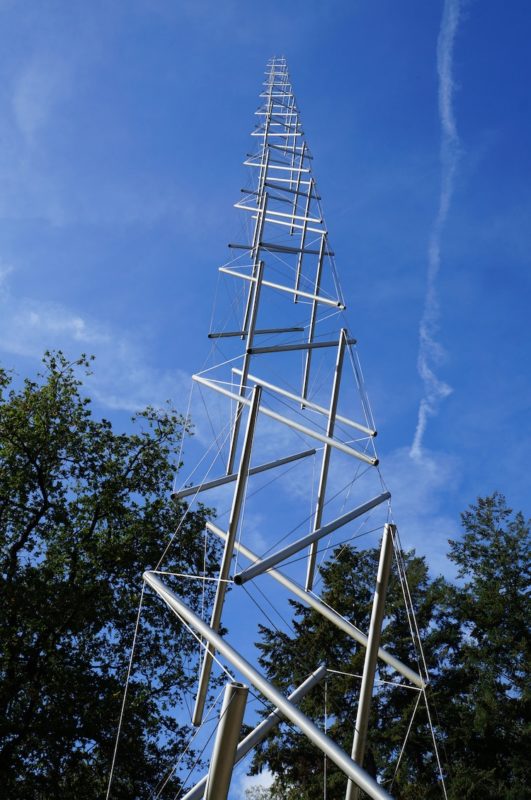“Don’t fight forces, use them.” -Buckminster Fuller
Tensegrity Structures are one of the construction world’s fascinating innovations. Architects always look out for the challenging and the unconventional, and the famous Buckminster Fuller is no exception. He created a “fuller world” on his way, experimenting with different architectural and structural visions, one of which turned out to be one of the intelligent innovations in the construction field: Tensegrity.
Tensegrity structures, according to Fuller, are “self-tensioning structures composed of rigid structures and cables, with forces of traction and compression, which form an integrated whole.”
The closest and most accessible example of a tensegrity structure is something within our bodies; our spine is a tensegrity structure! To make it simpler, most buildings’ structure systems are designed according to the compression force, which occurs when a physical force presses inward on an object—on the other hand, tensegrity structures are designed according to the tension force, which is a pulling force transmitted axially through a string, a cable, chain, or similar object.
What are Tensegrity Structures?
A structure where a series of continuous tension cables (the tensioned elements) are held in place by a series of discontinuous bars (the compressed parts).
What is the history of Tensegrity?
Buckminster Fuller began developing his vision of tensegrity structures in the 1920s. Still, it wasn’t until 1949 when his student, the sculptor Kenneth Snelson created the first structure to be defined as a tensegrity structure. Snelson used two X-shaped wooden bars suspended by a nylon cable to create a studying model for his Needle Tower sculpture. Through this experiment, Snelson defined the features of tensegrity structures.
Also Read: Get the Most out of 3D Printed Architecture Overview and Our Top Picks for Its Structures
What are the seven defining features of Tensegrity Structures?
-
Pervasive tension and separation of rigid elements.
In Snelson’s now iconic structure, the compression-resistant struts do not touch. Instead, they are individually lifted, embraced, and interconnected by a system of continuously tensed cables, a condition Snelson and Fuller called “continuous tension, discontinuous compression.”
-
Stable.
Though ethereal in appearance—its wooden Xs appear almost to float—Snelson’s sculpture is remarkably stable, despite its minimal use of rigid elements. This stability is because tensile and compressive components are always in mechanical equilibrium.
-
Prestressed.
This mechanical equilibrium results from how the compression and tensile components interact to bring out each other’s essential nature: the cables pull in on both ends of the struts while the struts push out and stretch the cables. The result is that each element in tensegrity structures is already stressed—the compression elements are already compressed, the tensile features already tensed—and they are emphasized by each other, a condition is known as “self-stress” or “prestress.”
-
Resilient.
While they are stabilized by prestressing, tensegrity structures are also exquisitely responsive to outside perturbation. Their components immediately reorient when the structure is deformed, and they do so reversibly and without breaking.
-
Globally Integrated.
Because the components are intimately interconnected, all feel what one feels, producing a genuinely holistic structure.
-
Modular.
Though complete on its own, a tensegrity structure can combine with other such structures to form a more extensive tensegrity system. Individual tensegrity units can be disrupted in these systems without compromising overall system integrity.
-
Hierarchical.
Smaller tensegrity structures may function as compressive or tensile components in a more extensive tensegrity system, which may perform a similar function in more comprehensive strategies.
10 Examples of Tensegrity Structures
Tensegrity structures are now commonplace in the built environment, appearing in everything from art to bridges to airports. Find out how you may include the tensegrity style by reading about these ten outstanding examples:
1- Needle Tower by Kenneth Snelson
The Needle Tower is, as previously mentioned, designed by Kenneth Snelson and is considered one of the essential tensegrity structures. It was designed for the Hirshhorn Museum and Sculpture Garden in Washington, D.C. The tower is made of aluminum tubes held in place by the tension created through the steel cables attached at the ends of each tube.
From afar, this tensegrity structure seems like a series of random, unconnected aluminum tubes as the steel cables are too thin to see. However, when the visitors stand in the middle of the tower, they can see the six-pointed Star of David.
Also Read: How Steel Structures Have Changed the Face of Architecture Forever
2- Munich Olympic Stadium by Frei Otto
Frei Otto, architect, and structural engineer was inspired by his experiences building tents in World War II to construct unique tensegrity structures until these became his specialization—he believed they were economic as they could be created with less material and fewer costs.
The Munich Olympic Stadium’s grand public space proves Frei Otto’s beliefs and more; tensegrity structures are economical and aesthetically very appealing!
3- The Biosphere by Buckminster Fuller
The Biosphere, alternatively called Montreal Biosphere, is an environmental museum with a sublime dome structure designed by the master of tensegrity structures, Buckminster Fuller. The dome structure fully integrates the aesthetics of tensegrity.
4- Kurilpa Bridge by Cox Rayner Architects and Arup Engineers
This is the world’s largest hybrid tensegrity bridge designed by Cox Rayner Architects and Arup Engineers. Kurilpa bridge is about 1,500 feet long and comprises a balance of large aluminum masts and light steel cables to achieve the defining features of tensegrity structures.
Also Read: 19 of the Most Beautiful Bridges Worldwide You’ll Ever See
5- Dissipate at Afrikaburn by Thomas Van Deventer
This project was completed in 2015 as part of a South African version of the American Burning Man event by Thomas Van Deventer and his design colleagues, supported by a crowdfunding campaign and independent construction. It gradually evolves from a traditional structure to a tensegrity structure as it reaches its top.
6- Denver International Airport by Fentress Architects
The iconic Denver International Airport is a well-known example of tensegrity structures. The footprint for the undulating roofscape measures approximately 300 feet by 1,000 feet and is supported by countless steel cables. The Teflon-coated fiberglass form represents the Rocky Mountains and has become an important architectural landmark.
7- Reconfigurable Systems of Tensegrity by Kuan-Ting Lai
This project explored the possibilities of utilizing tensegrity principles to build a structural system that can reconfigure itself. The research begins with understanding the basic tensegrity rules, exploring the methods of reconfiguring tensegrity structures, and finally, the prototype construction.
8- Parametric Tensegrity Structure for Local Art Fair by students of Ball State University in Muncie, Indiana
This example is a research project developed by students of Ball State University in Muncie, Indiana, under professors Gernot Riether and Andrew Wit, who are working towards formalizing parametric structures from 56 light and auto-shaded modules using elastane tissue to create a pavilion that offers protection from the sun. Structurally it was made from modular variations in measures and rotation from parametric software – Rhino and Kangaroo, essential for the conformation of the formal process.
9- Nasa Super Ball Bot
Super Ball Bot is a tensegrity-based, fully-featured landing and mobility platform that facilitates less expensive, more dependable planetary missions.
These robots designed to investigate the surface of planets are more robust and can tolerate more force. With its sphere-shaped wire and joint matrix, the Super Ball Bot is tough enough to survive being thrown from a spaceship thousands of feet above a planet’s surface and still bounce to safety.
The robot could be rolled over the planet’s surface in any direction once it landed and equipped with a data-gathering gadget in its very center. Due to the Super Ball Bot’s reduced mass and increased mobility, a prospective exploratory trip to Saturn’s moon Titan is now feasible.
10- Skylon (Festival of Britain)




